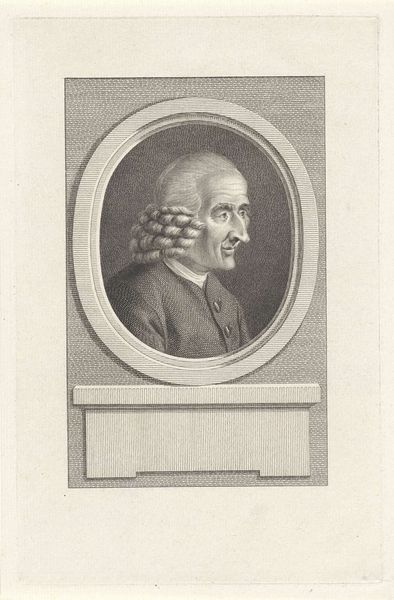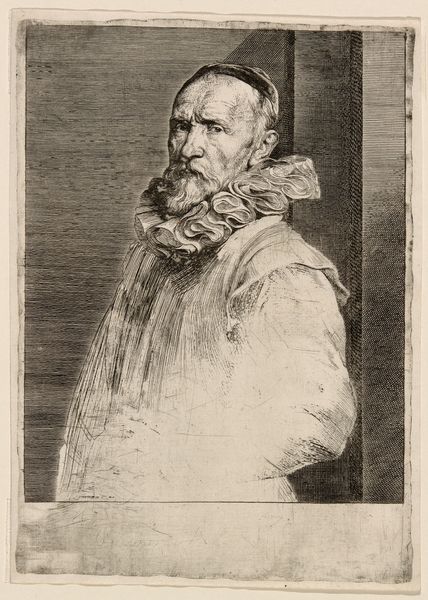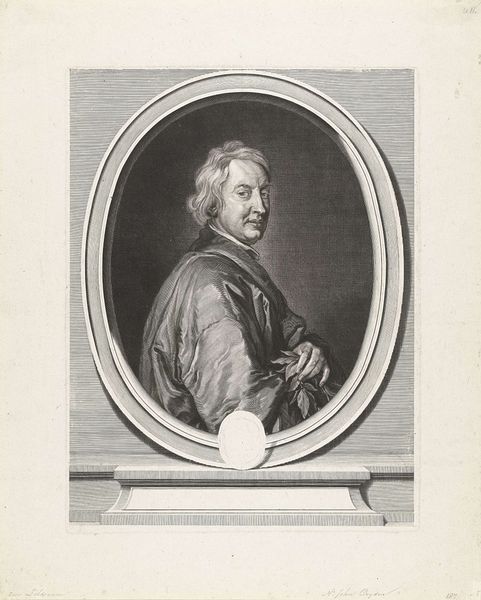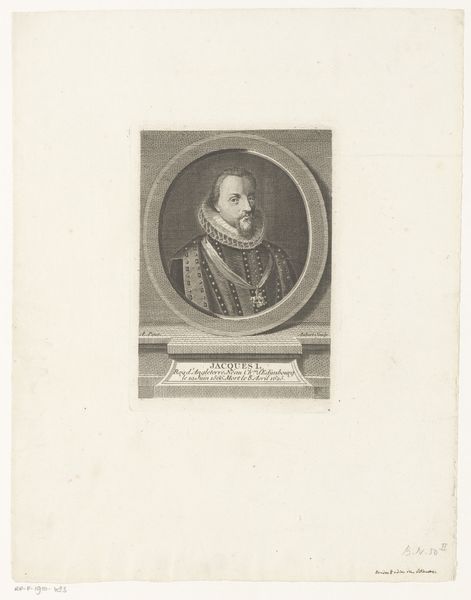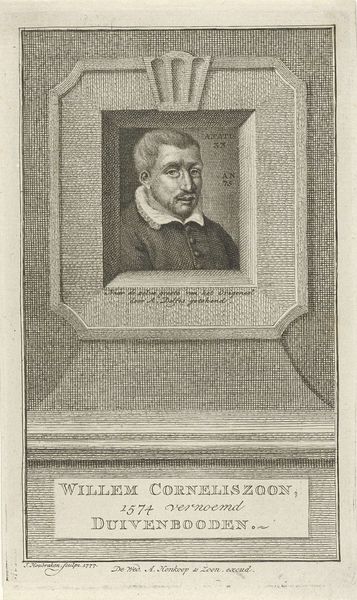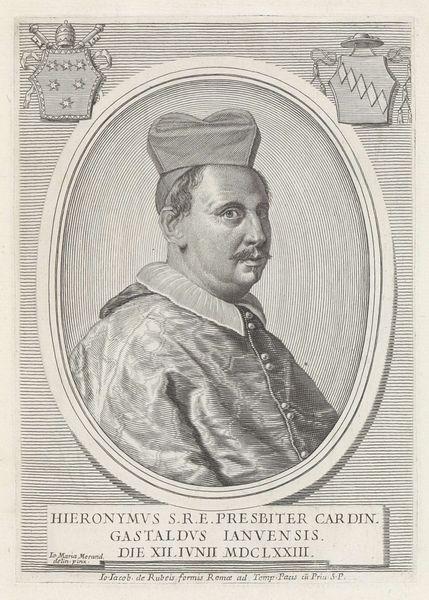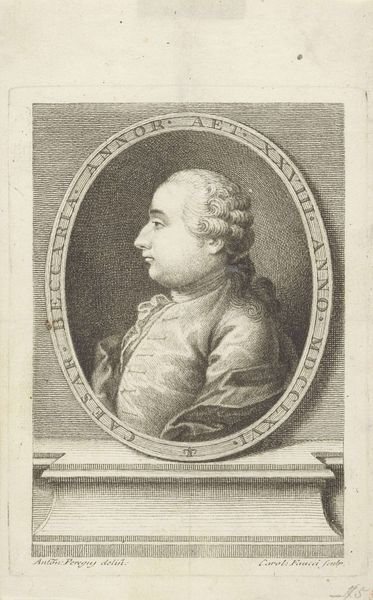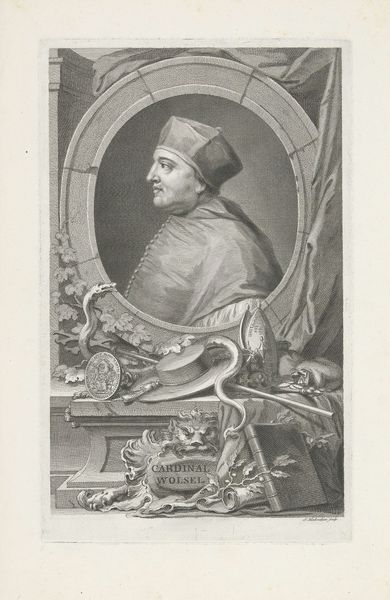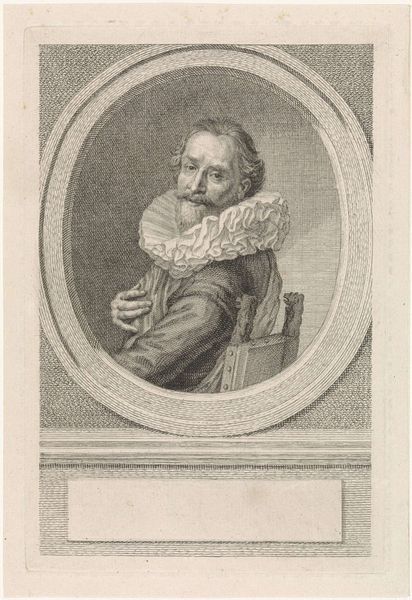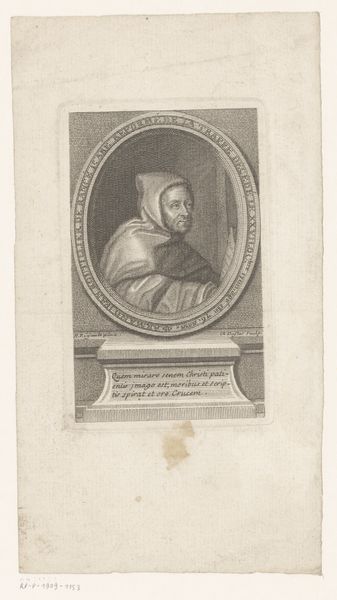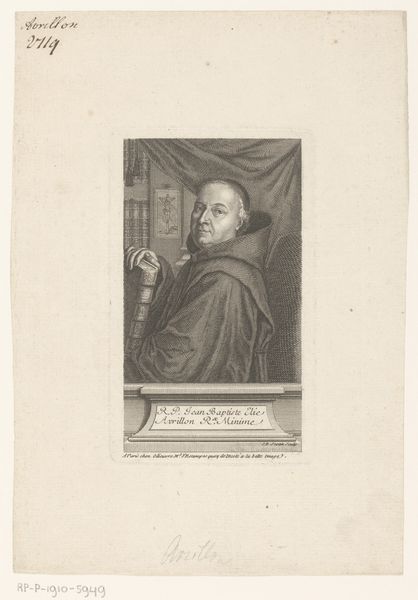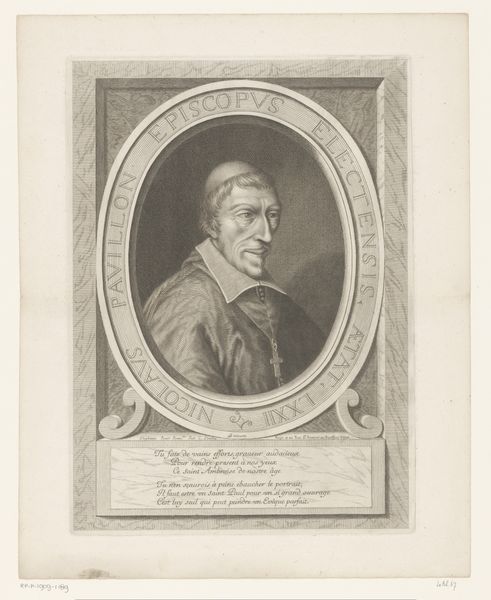
drawing, engraving
#
portrait
#
drawing
#
baroque
#
figuration
#
engraving
Dimensions: height 221 mm, width 151 mm
Copyright: Rijks Museum: Open Domain
Editor: So, this is Jan Punt's "Portret van schilder Jacques Ignatius de Roore," an engraving from 1736 at the Rijksmuseum. It’s a portrait of a painter within an elaborate frame. It feels… staged, very formal. What do you see in this work? Curator: Well, considering the material production of this engraving, we need to think about Jan Punt's access to resources. Copper plates weren’t cheap, nor was the specialized labor needed for the printing process. The social context demanded these portraits of artists, suggesting a growing market for artistic images. De Roore's portrayal suggests status, doesn't it? How is that status established? Editor: He's wearing rather elaborate clothing and is shown holding what looks like a palette and brushes, tools of the trade, if you will. And that very ornate frame seems to add to his importance. Curator: Exactly! It all signals something about artistic labor. Look closely at the quality of the engraving: the controlled lines, the shading. The engraver’s skill directly impacts how the painter, de Roore, is perceived. Consider also the economics of portraiture at the time. Who could afford to be represented in such a manner? What does this say about art patronage? Editor: I guess it reflects the shifting power dynamics where artists are moving away from solely religious commissions to also catering to wealthy individuals or depicting other artists. So this engraving is more than just a likeness; it's a commodity. Curator: Precisely! The print is the end product of skilled labor, and it’s destined for circulation. It functions within a system of exchange that supports and perpetuates specific ideals around artistic identity. It almost challenges the very notion of the “artist as genius,” no? It is a business transaction memorialized on a copper plate. Editor: That’s a really interesting take. I hadn't considered the economics behind even portraiture, or that portraiture is related to shifting market dynamics. Curator: Thinking about materials and processes opens up so many new angles on art. It reshapes how we perceive art history itself, doesn’t it?
Comments
No comments
Be the first to comment and join the conversation on the ultimate creative platform.
